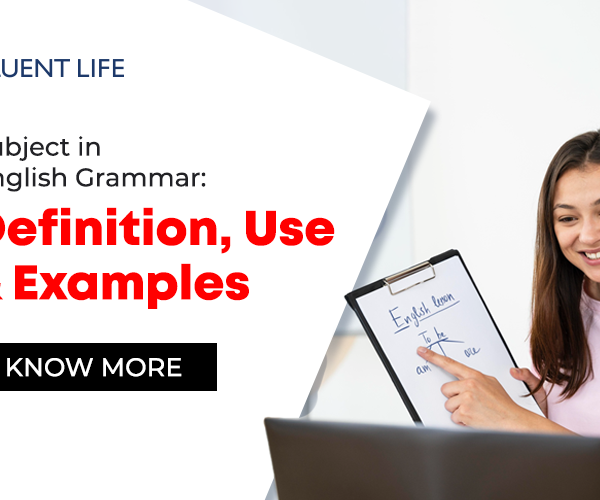Does it even make sense to try to improve English by reading? Let us hear an inner voice to dig deeper newspaper

Fluent life – Reading makes your English better
“If my English has issues, I find it difficult to speak fluently hence I switch to my native language or I chose not to speak at all. But I cannot improve in a language I try to avoid speaking in” Sounds like a spiral trap. Does it sound like you? We all suffer from public embarrassment and thus become a victim of stagnant communication skills. But there is way out – Reading
Sounds like a spiral trap? or does it sound much like yourself? To me, it sounds like all of us. We all suffer from the fear of public embarrassment, as a result of which we avoid social circles where English is the primary language of interaction, which in turn puts us in a shell and thus become a victim of stagnant communication skills. But there is way out – Reading
How to use reading to improve your Language skills?
Here are a few reasons why I think that not only does reading helps in acquiring better language skills, it is in fact more effective than any other practice or training
- Reading is a very personal activity and thus there is no social filter pulling you down
- Reading exposes you to several grammatical structures in a very natural way, thus improving your actual use of grammar.
- If you are reading fiction, it will greatly improve your active vocabulary and sentence structuring.
- You always have choices in reading. You can choose to read what you like most and thus enjoy while you are continuously improving.
- If you can find interactive games or activities in reading, your engagement levels are really high and you will acquire language with the greatest effectiveness
- You could say that 30 minutes of an engaging reading based game or activity is more effective than a 4-hour traditional spoken English class.
Here is an activity that I have designed with by my team member Prabha. Try it out and evaluate how many new words, idioms, phrases and sentence structure did you learn. Now imagine doing 2 such activities every day. You are sure to beat the jinx of communication
Sample activity: Nab the culprit
Objective:
The activity provides a platform to evaluate the reader’s ability
to read the story for details,
to understand the author’s intent
to comprehend the gist,
to identify the focus of the question,
to extract hidden or half-baked information based on one’s own thought process and logic
The Activity Unleashes!
Most of us have grown reading Sherlock Holmes mysteries and have perhaps nurtured a secret desire in our heart to someday solve the mystery of a missing person or lost article or maybe a murder! Here comes the opportunity to unleash your detective abilities and end up nabbing the painting thief.
Instructions: Please read through the instructions carefully.
Step 1: Read the story for details.
Step 2: Try to understand and comprehend the personalities of the suspects and identify their personal motives behind the theft.
Step 3: Answer the activity sheet and see how close your logical reasoning gets to our possible set of answers. (Useful tip: Try to eliminate each of the suspects by giving your original and logical reasoning of why they could not have committed the theft).
Step 4: Round up the culprit and bask in the glory of having solved the mystery in our very own “Holmes” style. You can ask your friend to play Dr. Watson, if you wish to get a real feel!
The Museum Theft
The world famous Louvre Museum in Paris, France is known for its unmissable artworks such as the Mona Lisa by Leonardo Da Vinci.
Once upon a time, the museum decided to auction some of its masterpieces to the highest bidder and news was sent to one and all who made it to the “Elite list in France”. The paintings, under tight security, were placed in the Main Museum Hall a day before the auction. The general public knew that the masterpieces, once possessed, could fetch a fortune for the owner!
The same night one of the paintings went missing from the gallery! The police launched a massive manhunt, thereby questioning everyone in the vicinity and who came under their lens-the museum security, office bearers, housekeeping, restaurant staff, visitors etc.
Five men, namely, Jawed Khan, Albert Pinto, Michael Fernsby, Mike Cooper, and Martin G were the last to leave the museum a day before the auction. The police started quizzing the 5 suspects in addition to the above.
Jawed Khan:
Aged 22. He was an Art student at University, sharing a flat with three others. He was very keen to make a career in the world of Art and Sculpture and somehow get associated to the museum to take the first steps.
On the night of the robbery, he was in the Museum restaurant having a drink with his friend, Michael Fernsby, hoping to catch sight of the top officials in the Museum and somehow further his cause. The bar staff served him several drinks!
Michael Fernsby:
He was a restaurant staff and always on a look out to get associated with the rich so that he could realize his ambition of becoming a rich man and owning a casino in the heart of Las Vegas in the US. His PR skills were so exemplary that he would end up becoming friends with the guests and join them for drinks after his working hours.
On the night of the robbery, he was enjoying drinks with Jawed and sharing the inside details of the auction (as known to the staff) that was to happen the following day.
Mike Cooper:
Aged 59. He was the Chief Security Officer, handling the security affairs for the big auction. He used to visit the casinos and off late had accumulated heavy debts that had to be paid off. This had also resulted in estranged relationship with his wife and he was desperate to set things right.
On the night of the robbery, he was pretty much in the vicinity of the museum all through and left early morning to freshen up and be back before the auction commenced. In the middle of the night he got busy with a phone call from his wife that perhaps left him relieved.
Martin G:
Aged 35. He was the housekeeping supervisor and a foul mouthed guy. He was always known to pick up fight with his staff and other department staff. He was issued stern and last warning by Mike Cooper, the Chief Security Officer, to behave or else he would be sacked out.
On the night of the robbery, Martin was not around as he had left the museum that evening in a rage after an altercation with Mike and threatened to settle scores with him.
Albert Pinto:
Aged 42. He worked for a large international bank in London that had recently gone bankrupt. He was counted amongst the “Elite club” of Paris and lived with his wife and three children. All three went to private school. He had two cars and had recently bought a new big house.
On the night of the robbery, he spent half the evening at home, then stepped out announcing that he was going to the sports club for some relaxation and returned home in the wee hours of next morning. He had an auction invite!
Solve the Case here
Now that you have given stress to your brain, try solving the case by answering all the questions that follow. If you are able to solve most of these questions, you have learned a lot through this activity
1. Suggest an alternative title for the story
2. Identify the characters
a) Heavy drinker, although unable to even manage an accommodation of his own
b) Short tempered and aggressive
c) Elite team member
d) A social butterfly
e) Hard core gambler
3. Give a one line answer for the reason behind the presence of the following at the museum on the night of the theft:
a) Jawed Ahmed
b) Michael Fernsby
c) Mike Cooper
4. Identify synonyms for the following set of words from the choices given below: Auction, Elite, Missing, Security, Bankrupt, Relaxation, Estranged, Desperate
(Privileged, Sale, Safety, Lost, Insolvent, Recreation, Separated, Worried)
5. State whether the following statements are True or False:
a) The museum was situated in France.
b) The auction invite was sent to all in France.
c) Albert Pinto was aged 35.
d) Mike Cooper headed the security team for the auction.
e) Jawed Khan was a science student.
6. Discussion based:
a) Identify the thief, quoting reasons for the same.
b) In the process of identifying the culprit, provide reasons as to why you think the others could not have committed the theft.
Try solving and submit your answers
We have the answers but you must try solving them on your own. If possible submit your answers and will tell you where did you go wrong.





